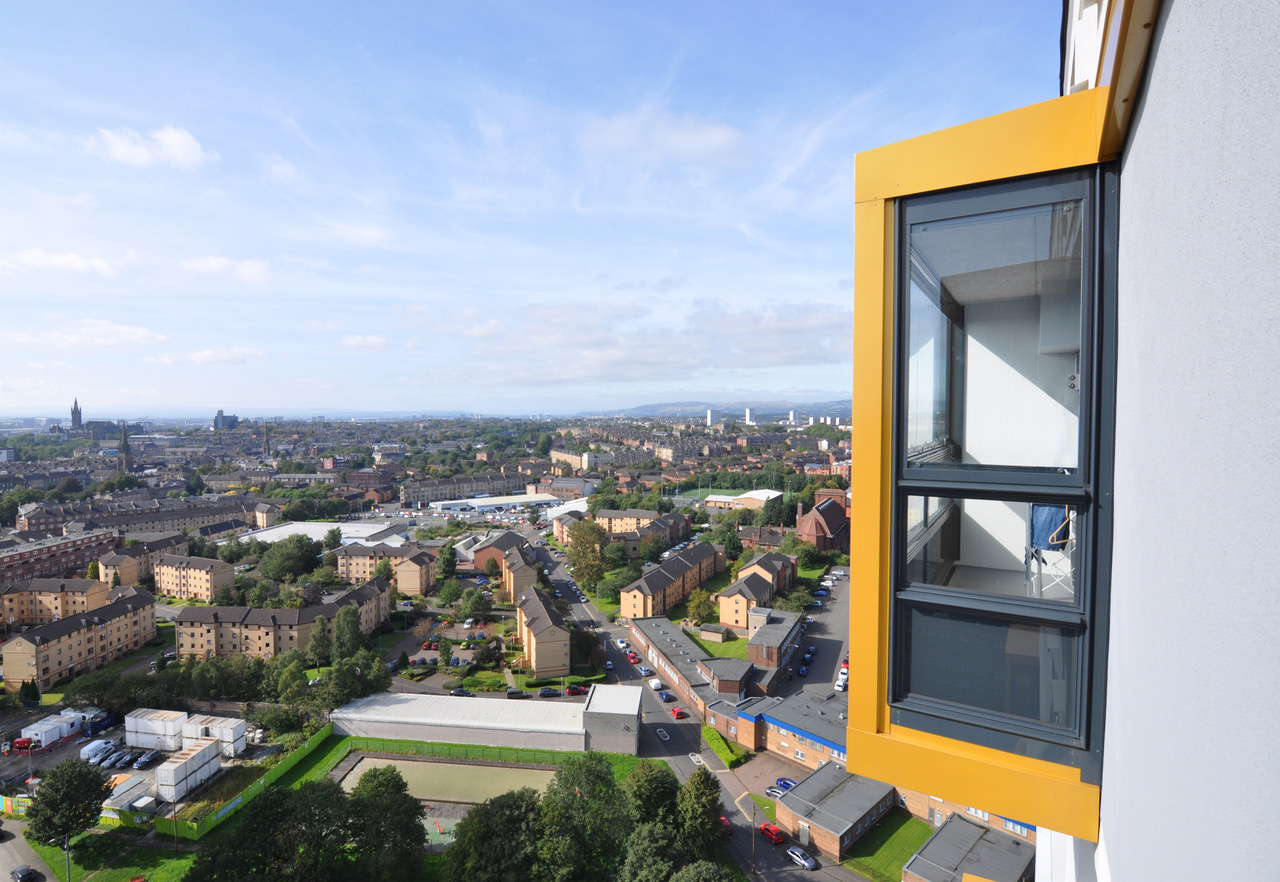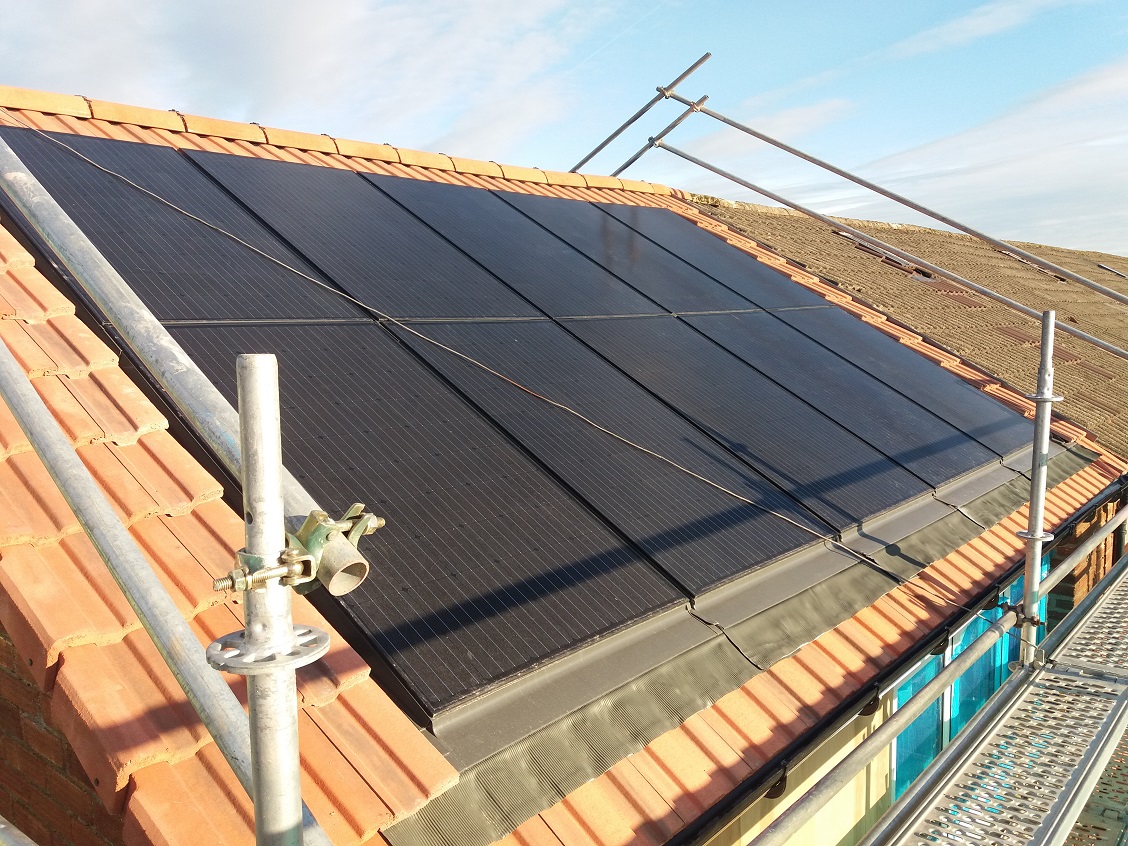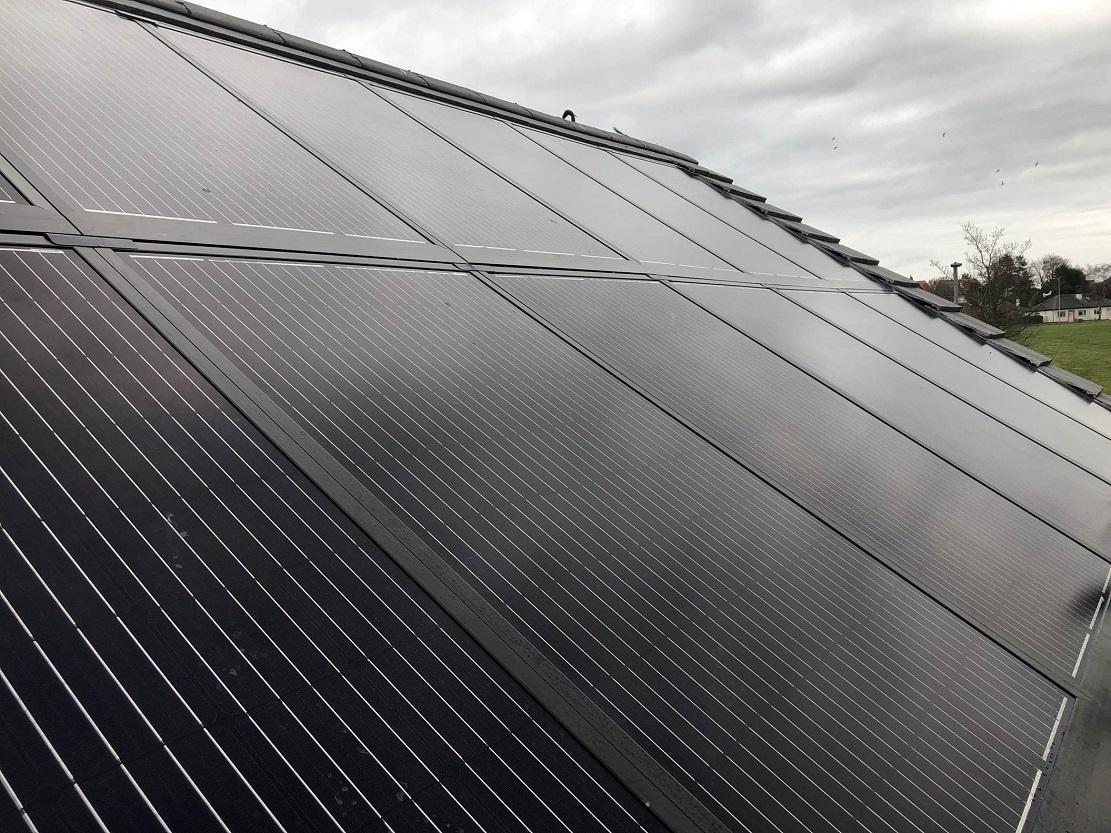Duncan Smith: How EnerPHit can be a catalyst for change
Duncan Smith draws on his experience in Scotland’s social housing and construction sectors to outline the potential for post-COVID change and how EnerPHit could be a solution at scale.

Queens Cross Housing Association's Cedar Court (Image by Collective Architecture)
It’s hard to imagine where we are just now compared to just three months ago, it seems a different world.
We watch and listen to the personal tragedies, lives changed, careers impacted, companies closing and employees joining the ques for food banks, across the world, not just here in the UK.
When it is over many people will have lost loves ones, their businesses and their livelihoods, and there will be as much commiseration and relief as there will be celebration; if indeed any.
However, the virus will be stopped, and life will continue. And when the dust settles, we’ll be presented with an opportunity for change. Perhaps a once in a generation opportunity. Both within our society as well as our industry.
What change should be up for discussion? For me everything. Big or small government, modern monetary theory, the living wage, globalisation, nationalism, localism, universal basic income, energy security, food production, the environment, ethical consumerism, the type of society we want and the sustainability of our planet.
How do we go about changing things? What do I know I’m just a labourer who reads books above his station? These are arguments are reserved for much smarter folk that me.

Wilmcote House (Image by ECD Architects)
So, what can we change? What can I change? Within the construction sector, my sector, we need new thinking, big thinking, joined-up thinking. We need leadership, optimism and ambition in a post-COVID world. Not small-mindedness.
So how do we create a more sustainable world and one that’s fit for our children? One that we’re proud of through the things we do in the sector we work in.
For me the same issues will exist post coronavirus as they did before the crisis, indeed they’ll be exacerbated. How do we address climate change, mitigate fuel poverty, improve the energy efficiency of our homes and comfort levels for residents, whilst at the same time upskilling our workforce and creating an innovative, dynamic and sustainable sector?
I’m tired of hearing people say that a deviation from the norm can’t be done, isn’t possible. That technology and practices are too complicated, unworkable or products and systems are too expensive, residents won’t use them or worse abuse them.
I disagree entirely. Everything is possible. How can we shape the future of our industry in a positive way? I think those choices might soon be before us. We must articulate the solutions at a strategic level.
Taking things back to the most basic form, what is too expensive and how do you measure cost. There’s an old phrase in the construction sector that many of you will be familiar with:
“You buy it cheap, you buy it twice”.

We need to look at the cost over the lifetime of a product a design or a system and take a more holistic approach. An example might be a product, such as aluminium, double the cost of plastic but it last four times as long, around fifty years. So, over a longer time period it’s half the price. Follow my logic?
We need to look at the systems and practices that we use and ask if they are value for money both now and in the future. In many parts of the UK the cost of energy to heat a home is comparable with that of the mortgage. That cannot be sustainable, not just for the environment but for households too.
With regards our historic homes if we carry out retrofit works to a house and it doesn’t move the cost in any way that the householder is able to see the benefit, are we doing the right thing? Is it worth it? Is it value for money? It’s subjective I know.
We need to aim for a significant reduction in energy consumption allowing the remainder to be provided by renewables.
This can only really be done through building fabric improvements and fundamentally increased airtightness levels.
In some urban areas we can look at district heating, but we still need to do all we can to improve the fabric. We cannot address climate change unless we address how much heat we need keep our homes warm.

Wilmcote House (Image by ECD Architects)
One way of achieving this is through adopting an EnerPHit model as standard, both within private and social housing. The EnerPHit standard requires a heating demand of no more than 25 kWh per m2. To do this we need increased fabric improvements, glazing and airtightness levels less than those of current new build standards.
I believe EnerPHit can be a catalyst for change and several social landlords have delivered EnerPHit projects [or near EnerPHit] over the last couple of years including Portsmouth City Council [Wilmcote House] and Queens Cross Housing Association [Cedar Court] through ECD Architects and Collective Architecture respectively. In fact, James Traynor at ECD has written a really good book which is well worth a read during lockdown if you’re looking for inspiration.
In terms of costs, it is more expensive to take a home to EnerPHit than a standard or “cosmetic” retrofit approach. Recent research by the Scottish Ecological Design Association (SEDA) estimated £25,000 on average and at scale. But what does it save long term, what are the physical and financial benefits?
From a purely monetary value to the resident it’s possible that it could reduce the costs of heating a home by 90% to under £200 on average. A typical saving on a heating bill [excluding electricity and hot water] could be £700 a year, £7,000 within a decade and so on.
For residents, homeowners and tenants, this could be a significant impact on their lives, especially within those lower socio-economic areas.
For the landlord, the removal of the requirement for heating system cuts down on repairs, and maintenance, as well as the future replacement of traditional gas boilers or electric storage systems.

Using available industry figures for social housing in Scotland from the SHBVN this could be as much as £18,000 over a thirty-year period. Offsetting a significant amount of the average upfront costs.
From a health perspective, I believe the benefits are almost equal to if not more than the financial. Many existing, and indeed new homes have poor, or substandard, levels of ventilation. This impacts the internal environment in a negative way through high carbon dioxide (CO2) levels, damp and mouldy homes.
We see the effects of people living in poorly ventilated homes regularly. The long-term health of people living in that type of environment is still not fully understood, outside of studies carried out by academic and health professionals.
Fresh, clean air and warm dry homes will have a dramatic if not transformational impact on the lives of those living in them.
Of course, not everything can be retrofitted to EnerPHit standard and where we can’t we must look at where renewables, such as heat pumps, can be best used.
The experience of Denmark is one we need to look at more closely in terms of communal and district heating. There are large areas of Glasgow, Edinburgh, Aberdeen, Dundee, Stirling, Inverness and Perth that are well suited to district heating.

A recent study “Piping Hot” by Scottish Renewables is well worth a read and shows the potential that exists.
However, we shouldn’t use renewables or district to offset fabric improvements but to compliment them. It’s not one or the other it should be together.
Photovoltaics (PV) [integrated rather than mounted] can and should be a standard on all new build and retrofit projects, but there are legal issues within mixed tenure blocks that we need resolve if we are to give each household a share of what’s produced.
Together with fabric improvements district heating and renewables there’s a massive opportunity here in Scotland, not just to improve the living conditions within households across the country but to address climate change and eradicate fuel poverty.
But there’s an opportunity to invest in our industry, to upskill our workforce in new practices and ways of working. To develop new ways of thinking about our buildings and addressing their efficiency such as offsite construction and modular housing.
If we take this opportunity it would have enormous benefits in building a sustainable and dynamic construction sector that’s fit for the coming decade and the climate emergency.

Duncan Smith
However, for all this to happen more and more of us, individuals, companies, specifiers, designers, buyers, providers and most crucially end users, must be convinced by the argument and become advocates of change for an EnerPHit approach.
An approach that reduces demand for energy to the minimum through fabric improvements and provides the remaining demand through sustainable means.
An approach that looks beyond the cosmetic and the short term and looks at value and the long-term benefits.
Let’s not go back to business as usual. Let’s not settle for more of the same. Let’s develop a new norm, one that we can be collectively proud of and one that delivers benefits to households and businesses alike. One that builds a sustainable future.
If COVID has taught us anything is that real and significant change is possible in a short space of time. We shouldn’t squander this opportunity to change. We shouldn’t revert to the tired old ways of doing things. They didn’t work before; they won’t work now. We should embrace the possibilities that change could bring.
The climate emergency doesn’t present us with the same immediacy in terms of our actions that COVID does, but its effects will nonetheless be comparable over the long term unless we change.

















